Jan 19 2021
Lepine a Paris Verge Fusee triple silver&enamel case pocket watch. Ottoman market
Posted by in lepine
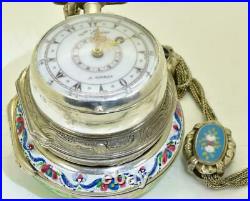
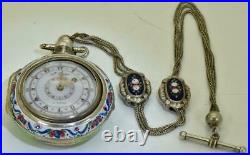


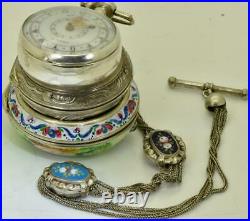

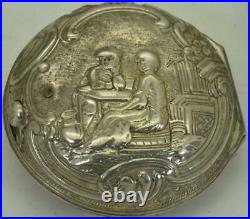
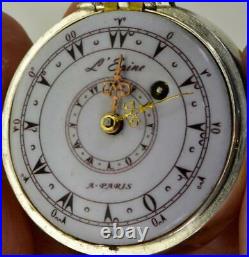
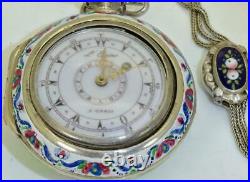
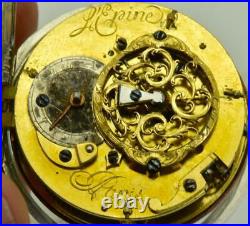
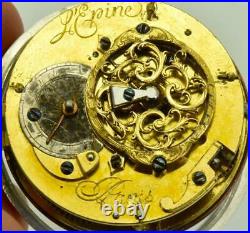
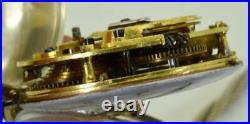
Lepine a Paris Verge Fusee triple silver&enamel case pocket watch. The watch has an amazing hand painted enamel outer case depicting the Blue Mosque in Istanbul;beautiful hand hammered repousse silver middle case and plain silver inner case. Fine enamel fancy dial with Ottoman numbers. Original hands and original high domed crystal. All the parts original! Amazing fire gilt verge fusee movement with hand pierced balance cock, silver regulator disc. It comes with a matching key. Jean-Antoine Lépine (LPine, LePine, Lepine, LEpine), was a revolutionary and inventive French watch and clockmaker, who contributed with crucial inventions for watchmaking still used nowadays. He was amongst the finest French watchmakers, who were years ahead of every other country in this respect. Around 1770, he devised a means of manufacturing a pocket watch that could be thinner, favouring the onward quest for further miniaturization. His radical design broke with a 300-year tradition and ushered in the age of precision timekeeping, the modern pocket watch was born. In addition to paving the way for the making of even thinner watches, this innovation was readily adaptable as the basic model for mass-producing watch-movements, a process that was to begin in the nineteenth century. Up to the 1840s, watches were all hand-finished, so that parts were not interchangeable. The Swiss, Leschot in particular, believed there was a market for cheaper, machine made watches with interchangeable parts. Refusing the incipient industrialization, French watch making only survived by becoming a peripheral adjunct to the Swiss watch making powerhouse, with only a few isolated Parisian cabinotiers still making truly French watches with French movements. The usual practice in the 18th century was to have the movement between two parallel plates and the balance wheel outside the top plate. The Lépine calibre discarded the top plate altogether and used individual cocks mounted on a single plate. This arrangement made it easier to assemble and repair the pocket watches, but also allowed the balance to be set to one side. Essentially, the “Lépine calibre” or “calibre à pont” , served to reduce a watchs thickness. To do this, it exchanged the traditional frame with two bottom plates for a single plate onto which the train is fixed with independent bridges. It also removed the fusee and its chain and then began using the cylinder escapement. He also invented the floating mainspring going barrel. The Lépine calibre uses bars and bridges instead of pillars and upper plates. As mentioned, the movement has no fusee which equalizes the driving power transmitted to the train, replaced instead by a going barrel to drive the train directly. This improvement was facilitated by using the cylinder escapement and enhanced springs. The calibre was quickly adopted throughout France and today its basic design is what characterizes all mechanical watches. It is important to note that the term “Lépine” can refer to both the calibre itself or a type of pocket watch with a flat, open-faced case in which the second wheel is placed in the axis of the winder shaft, in opposition to the savonete (or Hunter) watch where the second wheel and winder shaft are placed on perpendicular axes. This design has been known within the watch industry as the Lépine style ever since. Lépine’s work profoundly influenced all subsequent watchmaking, particularly Abraham Louis Breguet who used a modified version of the “calibre ponts” for his ultra slim watches. Indeed, except from the very start of his career the celebrated and extremely well known Breguet almost always used Lépine calibres and then modified them. Along with Ferdinand Berthoud Lépine was master of Breguet. NOTE:PLEASE OBSERVE CAREFULLY THE PHOTOS! IT IS A SIGNIFICANT PART OF THE DESCRIPTION. Every possible defect which is shown in the photos, but not mention in the description, will be considered for described. All the photos shoot by professional Nikon 105 Macro lens under 40x diopter magnification, so you can explore even the smallest detail like under microscope! Auctiva offers Free Image Hosting and Editing. Auctiva gets you noticed! The item “Lepine a Paris Verge Fusee triple silver&enamel case pocket watch. Ottoman market” is in sale since Saturday, January 2, 2021. This item is in the category “Jewelry & Watches\Watches, Parts & Accessories\Watches\Pocket Watches”. The seller is “riaerica2000″ and is located in Sofia. This item can be shipped worldwide.
- Brand: Lepine a Paris
- Department: Men
- Type: Pocket Watch